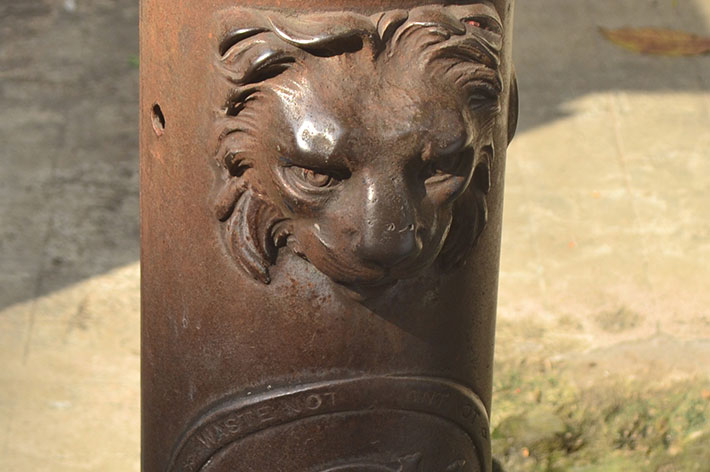The Greco-Roman lion taps are still found on the streets of Kolkata

Some roadside city taps still have sculpted lion heads. However, the once flowing mouth of the lion have dried up. The body of such taps resembles Greco-Roman styled pillars. Before they were installed, Calcuttans had only one source of water for drinking and bathing ---- the holy Ganga. Vaishnav Charan Seth ran a business of delivering pots of holy water to rich households. This water was used for daily rituals and performing puja. All Hindu houses had huge pitchers for storing holy water and Oriya water-carriers filled these pitchers with water from the Ganga. Even Hindus left dying relatives on banks of the Ganga. This ritual was called Ganga-jali.

It was around this time in 1870, residents noticed installations of lion-headed taps in Calcutta. They were awe-struck as holy water flowed from the lion’s mouth by twisting of a wheel. People were overjoyed to get Ganga water right at their doorsteps. However, soon there was an uproar following a rumour that washers of these taps were made of cow’s hide. In Muslim-dominated areas rumour spread that they were made of pigskin.

The British realized this could lead to a situation similar to Sepoy Mutiny. They felt natives failed to understand the huge effort and costs involved in supplying purified water to every corner of the city. Calcuttans argued there could be no dearth of water as their land was blessed by the holy Ganga. But they did not realize the lion-tap water was purified using upflow/downflow gravel method. The river water where cattle carcasses and human corpses were drowned, bathing, washing and cleaning carried out, was never fit for human consumption. The taps were set up to provide clean and purified water to citizens.

Following stiff resistance from locals, the British government inscribed an imperial order on the tap warning against misuse of water, and stating they were set up as a goodwill gesture. The inscribed order has faded today, but some taps still have inscriptions visible: ‘Waste Not.’ Such path-breaking advice to stop water wastage is long-forgotten and these taps long discarded. But wouldn’t it be a dream-come-true to see water gushing out from the lion’s mouth once more?












